Life As A Surfer
How To Surf Hike
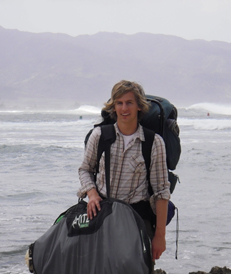 Tips From Surf Hiker Greg Kroleski
Tips From Surf Hiker Greg Kroleski
I am an outdoorsman. When I know there won't be waves over the weekend, I'll plan a trip to the mountains or desert to do a bit of backpacking. I love exploring, hate crowded lineups and wish I could have grown up in the 1950's when the legends of the sport were finding and naming new surf breaks on a weekly basis. To satisfy my need for stoke, I surf hike.
Basically surf hiking is walking up a stretch of coast in search of waves. You have the increased access to spots in a remote location that you could only otherwise get by boat, but since you are on foot and traveling slower, you'll be much more in tune to the area, tide and waves.
Surf hiking isn't all about scoring sick waves, it's a complete experience. It is time to reflect, enjoy nature and the waves are just the icing on the cake. You'll end up spending 80% of the day hiking and about 20% surfing. Unless of course you find a gem and decide to stay put, surf all day and camp in the same spot. There is no night life, so you'll end up sleeping when its dark. Your day will be shorter but somehow you'll get more out of it. If you think surf hiking is for you, or maybe you want to try it out with a friend, here are my tips on how to get started.
Tip #1: Bring the Right Gear
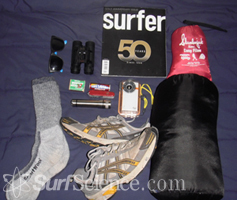 The most important part of this trip is your gear. It will make or break the entire trip. If you've done some backpacking before, you will already be familiar with 90% of what you have to bring, but if not, here is a basic breakdown. Keep in mind that your goal is to pack as light as you can while still bringing enough to be prepared for whatever might happen.
The most important part of this trip is your gear. It will make or break the entire trip. If you've done some backpacking before, you will already be familiar with 90% of what you have to bring, but if not, here is a basic breakdown. Keep in mind that your goal is to pack as light as you can while still bringing enough to be prepared for whatever might happen.
Camping Gear: A good backpack is a must. If you don't have one, borrow one, or go find a sale and spend $150. You will be carrying around everything you have with you on your back for a long period of time; this is not an area to skimp. You will also need a tent, sleeping bag and good pair of hiking boots. Depending on where you are going, you can get away with spending less on these three items, but if you plan on doing a few adventures, then it is worth spending the money. REI is a great place to go and even places like Big 5 have some good stuff at great prices.
Along with those items, make sure to bring the following: flashlight, matches, pocket knife, sunglasses, & some good wool socks. NOT COTTON SOCKS. Let me stress that again. Cotton gets wet, heavy and will give you blisters. You will be hiking around tide covered areas, river mouths and in all sorts of wet conditions, you will need wool socks. A good surf magazine can also come in handy. You can read it during some down time and it might help if you're having trouble starting a fire. (Some magazines are a bit more enjoyable to read, while some others make better fire starters, bring a few!)
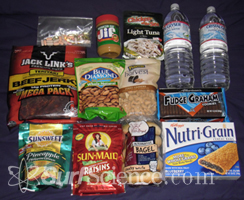 Food: You'll need a lot of it because you will be burning calories while hiking and surfing. If you are going somewhere remote, you might not have a chance to replenish supplies, so you'll need food for the whole week. You body is going to need a lot of protein. That is what will allow your muscles to recover. Things like nuts, beef jerky and packaged tuna are all great sources of protein that will keep and don't need to be cooked before eating.
Food: You'll need a lot of it because you will be burning calories while hiking and surfing. If you are going somewhere remote, you might not have a chance to replenish supplies, so you'll need food for the whole week. You body is going to need a lot of protein. That is what will allow your muscles to recover. Things like nuts, beef jerky and packaged tuna are all great sources of protein that will keep and don't need to be cooked before eating.
You will also need a lot of water and carbs. Salt water is no good for you and the sun will drain you, so pack about a gallon per day or find a way to stock up. Some water purification tablets or a pump from your camping store will turn river water into drinking water and let you pack a bit lighter. Carbohydrates and some sugars are good as well. I like dried fruit for a nice sweet energy boost.
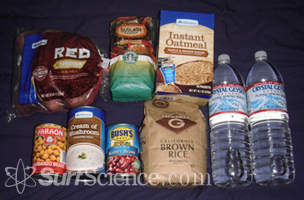 If you are able to make a fire or bring a stove, you can bring some food to cook as well. Rice, potatoes, oatmeal and soup works great and won't go bad as you're hiking. A warm meal can hit the spot, but make sure to bring extra water for cooking. Finally, it's always a good idea to pack something to reward yourself after a long day of hiking. I like to bring some cookies and a cigar, but you can bring whatever treats you happen to be in to.
If you are able to make a fire or bring a stove, you can bring some food to cook as well. Rice, potatoes, oatmeal and soup works great and won't go bad as you're hiking. A warm meal can hit the spot, but make sure to bring extra water for cooking. Finally, it's always a good idea to pack something to reward yourself after a long day of hiking. I like to bring some cookies and a cigar, but you can bring whatever treats you happen to be in to.
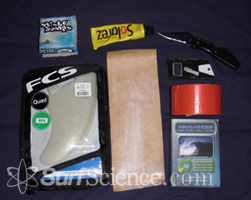 Surfing Stuff: Because this is a surf hiking trip, you will need a few surfing related items. You will most likely be limited to one surfboard, because of weight, so you will need to keep it seaworthy. Solarez works wonders. You can fix dings and get back in the water within minutes. You will also want sandpaper and a knife to help with the ding repairs. Don't forget wax, a comb and your wetsuit or rash guard. Since you will be limited to one board, a good way to have some options is to bring a few sets of fins. Bring a small set of fins to loosen up your ride and a big set to hold things steady. A book with some local info on the waves where you will be surfing will come in handy as well. There are a few great ones like the Wave-Finder or Surfline Guides depending on where you go.
Surfing Stuff: Because this is a surf hiking trip, you will need a few surfing related items. You will most likely be limited to one surfboard, because of weight, so you will need to keep it seaworthy. Solarez works wonders. You can fix dings and get back in the water within minutes. You will also want sandpaper and a knife to help with the ding repairs. Don't forget wax, a comb and your wetsuit or rash guard. Since you will be limited to one board, a good way to have some options is to bring a few sets of fins. Bring a small set of fins to loosen up your ride and a big set to hold things steady. A book with some local info on the waves where you will be surfing will come in handy as well. There are a few great ones like the Wave-Finder or Surfline Guides depending on where you go.
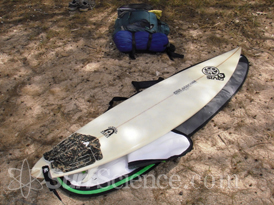 Surfboard: One of the most important decisions you will make is what board to bring. You can probably only bring one, so choose wisely. Keep in mind you will have to lug this thing around all week, so your favorite retro board might not be the best option. You will want something right in the middle range of the waves you expect. A nice shortboard, maybe 2-4 inches bigger than your standard thruster can work well.
Surfboard: One of the most important decisions you will make is what board to bring. You can probably only bring one, so choose wisely. Keep in mind you will have to lug this thing around all week, so your favorite retro board might not be the best option. You will want something right in the middle range of the waves you expect. A nice shortboard, maybe 2-4 inches bigger than your standard thruster can work well.
If you're not sure there will be swell, a slightly wider board will ensure you can surf in a wide range of conditions. No matter what, the board you take won't be perfect for everything, but hopefully it will be a good fit all around for the trip. On my last trip I took a 7'2" board to some hidden breaks around Hawaii where I rode both 4' faces and 15-20' faces. It wasn't perfect for either, but I made due and had a great time. That is just part of the adventure.
Tip #2: Choose a Good Stretch of Coastline
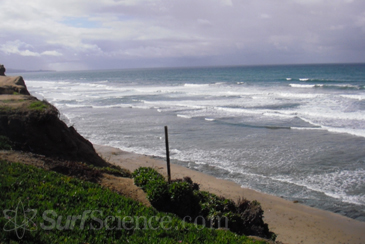 You will want to look for two main things when picking a stretch of coast to hike: wave probability and camping options. There is a wealth of information online about what coasts get waves during which seasons. For example, we all know Hawaii's northern shores get waves during the winter and that Baja California is good during the summer. Do some research and narrow down your region based on when you can clear some time.
You will want to look for two main things when picking a stretch of coast to hike: wave probability and camping options. There is a wealth of information online about what coasts get waves during which seasons. For example, we all know Hawaii's northern shores get waves during the winter and that Baja California is good during the summer. Do some research and narrow down your region based on when you can clear some time.
From there, narrow it down based on the types of waves you would like to score. Figure out if you're looking for tubes, point breaks, beaches etc and decide on your final area based on that. Where figuring out how far you can surf hike, keep in mind that you can travel about 10 miles per day on foot depending on the terrain and how much time you spend in the water. I like to go with 50 miles per week to be safe or about 15 miles for a long weekend.
As for camping options, this is more important than you might think. Campgrounds are nice, but might be occupied which can ruin the experience. There are a lot of places where you can sleep on the beach without anyone knowing. Sometimes it is legal, sometimes it is not, so check with local authorities first (or don't...). If you're planning on crashing you will want to keep in mind a few safety factors such as locals, the homeless and animals. The first two become less of a factor when you get away from major cities but animals can pop up anywhere. I once woke up with a 500lb seal laying 10 feet from my tent.
Tip #3: Be Adventurous
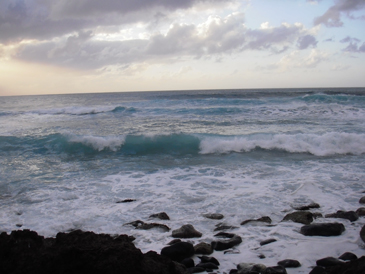 This probably goes without saying, but just to emphasize, this trip will not be what you planned. That is sort of the point. If you have expectations, ditch them. Just go with the flow. Meet locals, talk to them, join them for dinner. If you have some buddies to go with, the trip can be a lot more fun, but you will definitely hit points where you bug each other, so choose wisely. I find a group of three works really well to balance conflict. If you are truly brave, go it alone; you will learn a lot about yourself.
This probably goes without saying, but just to emphasize, this trip will not be what you planned. That is sort of the point. If you have expectations, ditch them. Just go with the flow. Meet locals, talk to them, join them for dinner. If you have some buddies to go with, the trip can be a lot more fun, but you will definitely hit points where you bug each other, so choose wisely. I find a group of three works really well to balance conflict. If you are truly brave, go it alone; you will learn a lot about yourself.
Finally, respect the country you are in, respect the people you meet and respect the ocean. You will surfing in places you haven't been before, so take some time to observe the area and look out for signs of danger. Always clean up after yourself and while you're at it, clean up a bit more. If you can, try and do some good for the local economy while you're there by buying something from local artists or farmers. Heck, bring a few hundred bucks to donate to a local orphanage. For the cost of a new board, you can feed a group of children for a month. That's huge.
I hope these tips help you get stoked about taking a trip. If not now, maybe the idea will fester in your head and you'll go in a few years from now. If you do, drop me a line and let me know how it was. If you have other surf hiking tips, leave a comment and share them with your fellow surfers.

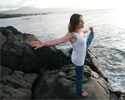
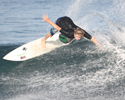
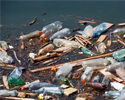

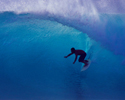
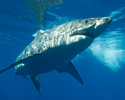
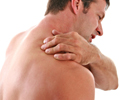
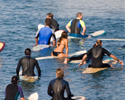
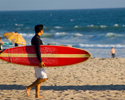
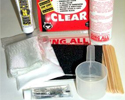



6 Comments